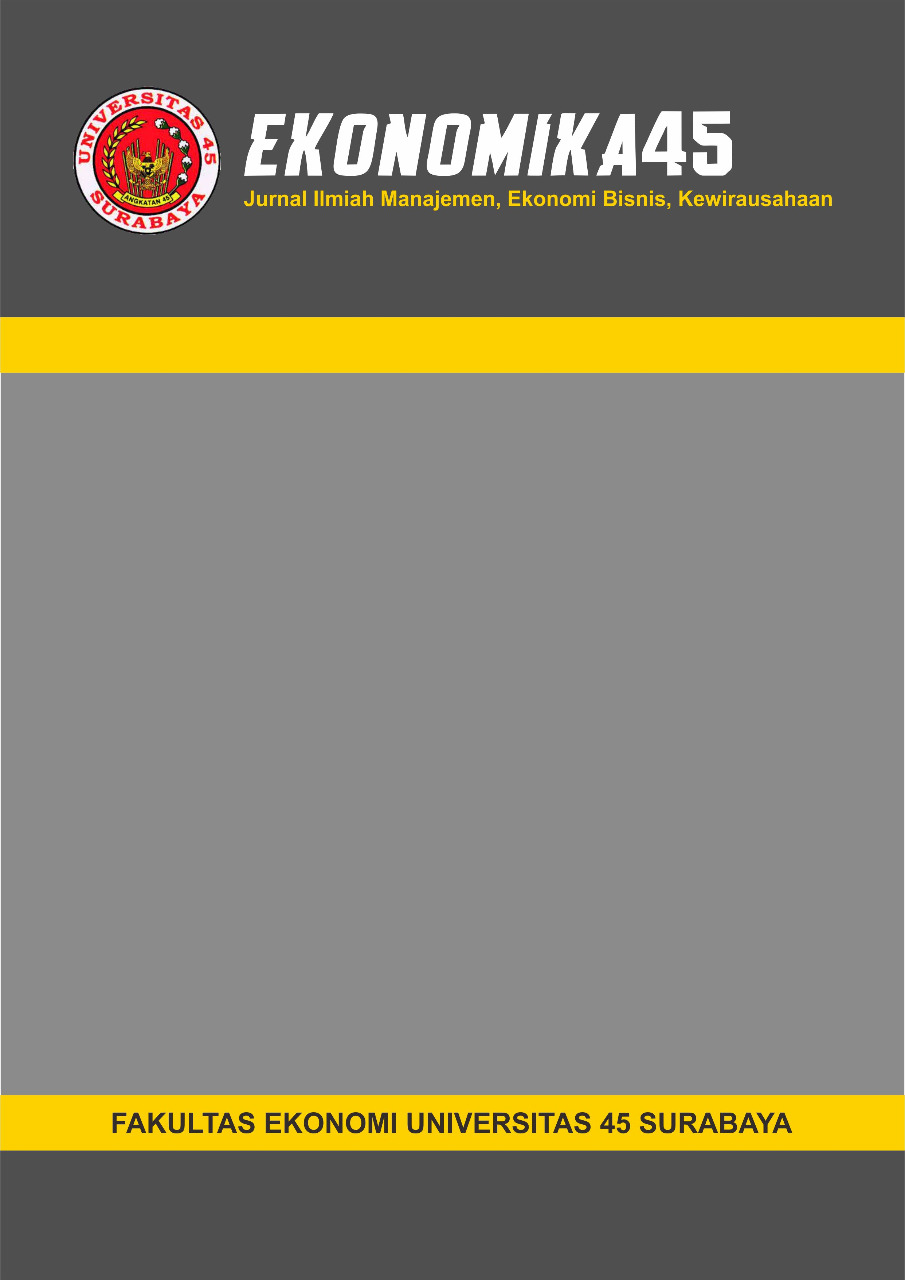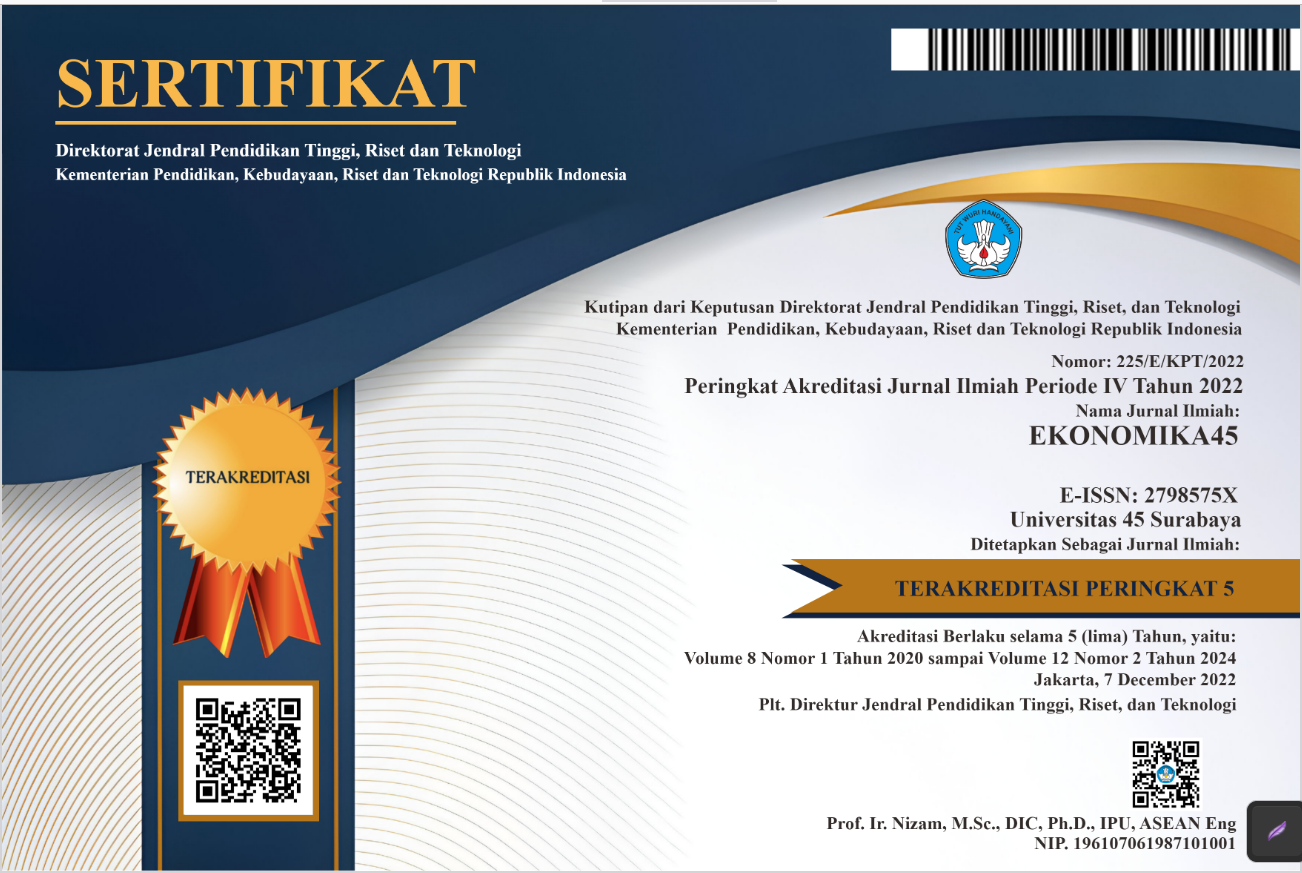Valuasi Ekonomi Pemandian Bah Tio Sampuran
DOI:
https://doi.org/10.30640/ekonomika45.v12i2.4428Keywords:
Economic-Valuation, Total-Value, Bah-Tio-Sampuran, SimalungunAbstract
This research was conducted Bah Tio Sampuran baths at Simalungun Regency in May 2025. The research objective was to analyze the economic value of natural resources of Bah Tio Sampuran bathing place. This research used survey method. Data were collected by direct observation and interviews with respondents to identify and classify patterns of natural resource utilization and to determine the value of natural resources as measured by the community's willingness to pay or accept an environmental change. Data analysis used economic valuation techniques to calculate the total economic value (TEV) of the natural resources.
References
Adrianto, L. (2006). Paradigma baru pengelolaan sumberdaya alam berbasis ekosistem. Bogor: Pusat Kajian Sumberdaya Pesisir dan Lautan, IPB.
Bappenas. (2004). Strategi nasional pengelolaan sumber daya alam. Jakarta: Badan Perencanaan Pembangunan Nasional.
Barbier, E. B. (1994). Valuing environmental functions: Tropical wetlands. Land Economics, 70(2), 155–173. https://doi.org/10.2307/3146313
Costanza, R., dkk. (1997). The value of the world’s ecosystem services and natural capital. Nature, 387(6630), 253–260. https://doi.org/10.1038/387253a0
Daily, G. C. (Ed.). (1997). Nature’s services: Societal dependence on natural ecosystems. Washington, DC: Island Press.
Fauzi, A. (2004). Ekonomi sumber daya alam dan lingkungan: Teori dan aplikasi. Jakarta: Gramedia Pustaka Utama.
Hanley, N., & Spash, C. L. (1993). Cost-benefit analysis and the environment. Cheltenham: Edward Elgar.
Kementerian Lingkungan Hidup. (2009). Pedoman valuasi ekonomi sumber daya alam dan lingkungan hidup. Jakarta: Kementerian Negara Lingkungan Hidup.
Lindahl, K. B., & Stenseke, M. (2016). Value chains, multifunctionality and sustainability: Challenges from the Swedish forest sector. Sustainability, 8(6), 495. https://doi.org/10.3390/su8060495
Nilwan, A., dkk. (2003). Model pengelolaan sumber daya pesisir berbasis masyarakat. Jakarta: Pusat Kajian Sumberdaya Pesisir dan Lautan, IPB.
Pearce, D. W., & Turner, R. K. (1990). Economics of natural resources and the environment. London: Harvester Wheatsheaf.
Perman, R., Ma, Y., McGilvray, J., & Common, M. (2003). Natural resource and environmental economics (3rd ed.). Harlow: Pearson Education.
Pindyck, R. S., & Rubinfeld, D. L. (2013). Microeconomics (8th ed.). Boston: Pearson.
Tietenberg, T., & Lewis, L. (2018). Environmental and natural resource economics (11th ed.). New York: Routledge.
Turner, R. K., Pearce, D., & Bateman, I. (1994). Environmental economics: An elementary introduction. Baltimore: Johns Hopkins University Press.
Downloads
Published
How to Cite
Issue
Section
License
Copyright (c) 2025 EKONOMIKA45 : Jurnal Ilmiah Manajemen, Ekonomi Bisnis, Kewirausahaan

This work is licensed under a Creative Commons Attribution-ShareAlike 4.0 International License.









